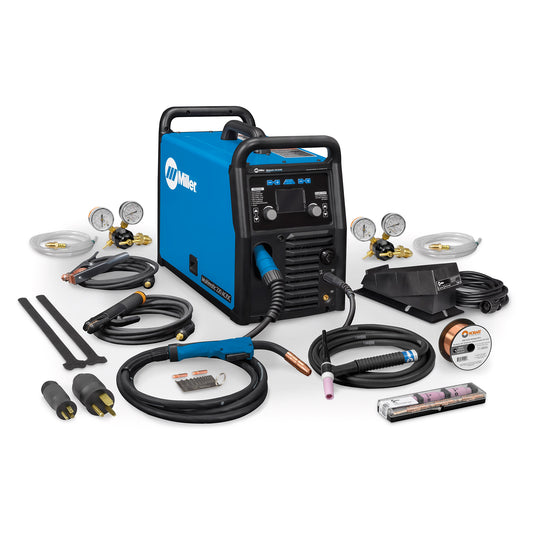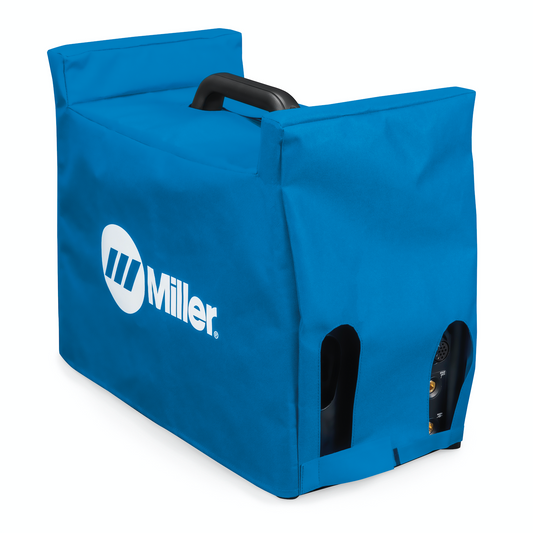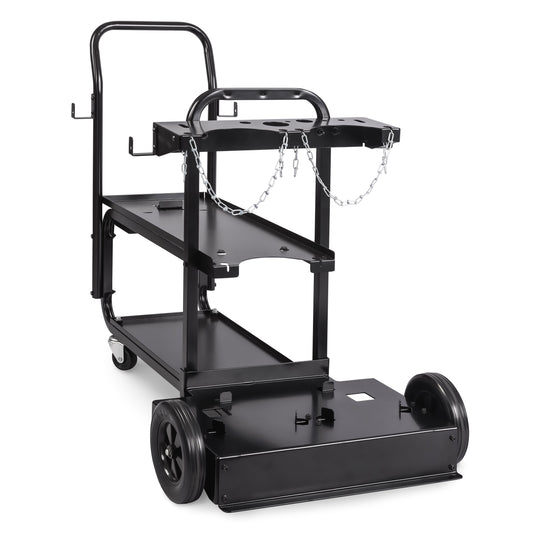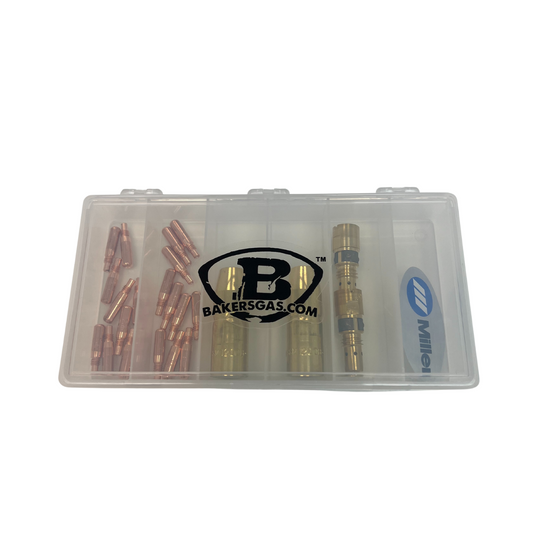In the ever-evolving world of welding, the Miller Multimatic 220 is now equipped with the capability to weld 6010 stick electrodes. However, the spotlight today is on its exceptional high-frequency TIG function, a feature that sets it apart in the realm of TIG welding. In this blog post, we'll delve into the benefits of high-frequency TIG, comparing it to scratch start and lift arc TIG, and shedding light on the differences between regular TIG functions and the elevated precision of high-frequency TIG.

The Basics: Scratch Start TIG vs. Lift Arc TIG
Before we explore the revolutionary high-frequency TIG function, let's quickly recap the differences between scratch start and lift arc TIG welding.
Scratch Start TIG: Scratch start TIG is often found in budget-friendly or stick machines converted to TIG. In this method, the tungsten electrode is manually scratched along the workpiece's surface to initiate the arc. Achieving the right balance is crucial, as excessive scratching may lead to the tungsten sticking to the metal. Additionally, maintaining the optimal distance between the tungsten and the workpiece is essential to prevent arc extinguishment.
Lift Arc TIG: Lift Arc TIG presents a more user-friendly alternative. To strike the arc, simply place the tungsten tip directly onto the desired welding spot, depress the foot control to initiate the circuit, and lift off the piece to strike the arc. Lift arc TIG is often preferred in environments with sensitive equipment, such as CNC machines or computers, where high-frequency starts are not ideal.
High-Frequency Start TIG: Now, let's explore the pinnacle of TIG welding – high-frequency start. Regarded as the gold standard, high-frequency start TIG offers unparalleled precision and ease of use. In this method, you position the tungsten close to the workpiece, depress the foot control to release gas and initiate the circuit. The shielding gas flows, and the arc strikes effortlessly when placed at the optimal distance from the workpiece. This method is not only a necessity for TIG welding aluminum but also a valuable feature for welding other materials.
Benefits of High-Frequency TIG:
-
Ease of Use: High-frequency start eliminates the manual scratching involved in scratch start TIG, making the initiation process cleaner and more user-friendly. Welders can focus on the welding technique without the hassle of finding the right balance during arc initiation.
-
Precision and Consistency: High-frequency TIG ensures consistent arc initiation, promoting precision in welding. This is particularly crucial for intricate projects and when working with materials that demand a high level of accuracy.
-
Versatility: While essential for TIG welding aluminum, high-frequency start is a valuable asset for welding various materials. The versatility it offers makes it a preferred choice for welders dealing with a range of projects.
The 2024 Miller Multimatic 220's integration of high-frequency TIG function catapults it to the forefront of welding technology. Whether you're a seasoned professional or a novice welder, the benefits of this advanced feature are undeniable. To experience the seamless precision of high-frequency TIG welding, look no further than the Miller Multimatic 220.
Check out our review video below that outlines this feature on the Miller Multimatic 220!
If you're looking for a more in depth dive into the other features on the Miller Multimatic 220, you can check out our blog post here!
For further inquiries or quotes on the Miller Multimatic 220 , reach out to Baker's Gas and Welding at 877-930-5690 or email support@bakersgas.com.
Happy welding!





